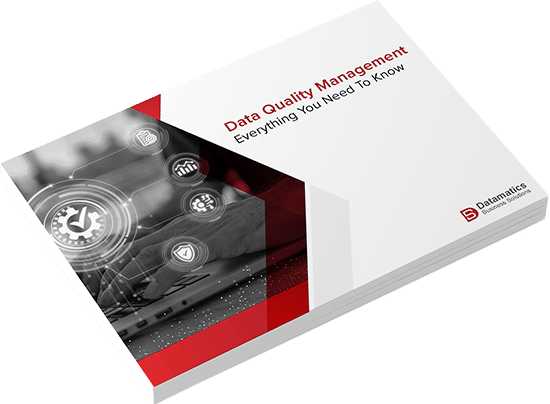Back in the day, B2B marketing was a bit like playing darts in the dark. Companies were tossing out generic ads, crossing their fingers, and hoping something would stick. No clue about who they were talking to, what issues needed solving, or what would actually catch someone’s attention. Then, in walked audience data.
Businesses began collecting and analyzing this data, gaining valuable insights into their target market. Suddenly armed with precise information about their audience’s traits and behaviors, companies could tailor marketing strategies to meet specific needs and preferences.
The results? Oh, they were like fireworks on the Fourth of July. A recent survey by Demandbase revealed that 90% of B2B marketers acknowledged the positive influence of audience data on their marketing strategies. Beyond strategic enhancements, audience data plays a crucial role in improving customer satisfaction, driving revenue growth, and increasing the lifetime value of clients.
So, what’s the role of audience data in B2B sales and marketing? Let’s find out. In this blog, we will explore the applications, benefits, and best practices for gathering and analyzing audience data, shedding light on its significance in optimizing marketing initiatives.
Table of Contents
What is Audience Data?
Audience data is the linchpin that transforms business strategies from guesswork to precision. Without insights into who engages with your ads, visits your website, or buys your products, navigating the competitive landscape becomes a formidable challenge. Understanding your audience empowers informed decisions in branding, marketing, and beyond. This data includes details like intent, interests, past purchases, demographics, brand affinities, firmographics, and employment, offering a comprehensive view crucial for B2B success.
The Strategic Role of Audience Data in B2B Sales & Marketing
Audience data is revolutionizing how businesses approach marketing. From targeted campaigns to personalized content, let’s explore how harnessing audience data can elevate your marketing strategies and drive success:
1. Targeted Campaigns
One of the primary applications of audience data in B2B marketing is assisting marketers in identifying and targeting businesses or individuals most likely to have an interest in their products or services.
By analyzing audience data, marketers can segment their target audience based on various criteria such as industry, company size, job title, geographical region, and more. This segmentation allows them to craft more targeted marketing strategies that are likely to resonate with their specific target audience.
2. Personalization
Using audience data, B2B marketers can create content and marketing messages finely tuned to meet the needs and interests of their target audience. By digging into data like demographics, purchasing history, and online behavior, marketers gain a deeper understanding of their audience’s preferences and pain points. This insight enables the delivery of more engaging and relevant material, likely to capture the audience’s interest and drive them to take action.
3. Strategic Content Planning
Leveraging audience data to shape a company’s content strategy empowers B2B marketers to create content that resonates more effectively with their intended audience. By delving into data about the topics, formats, and channels preferred by their target audience, marketers can produce more engaging and impactful content. This strategic approach increases the likelihood of content being shared and interacted with by their ideal consumers.
4. Lead Generation
Audience data becomes a valuable ally in identifying potential clients with a high likelihood of interest in a company’s offerings. By scrutinizing data such as search history, social media activity, and website behavior, B2B marketers can precisely pinpoint potential leads. Armed with this information, marketers can craft tailored strategies designed to nurture these leads through the sales funnel.
What To Expect from Your Data Cleansing Transformative Benefits of Audience Data
1. Maximized Return on Investment (ROI):
The use of audience data empowers B2B marketers to achieve a heightened return on investment. By crafting more personalized and targeted strategies, marketers can enhance the efficiency of their initiatives and minimize resource wastage.
2. Enhanced Customer Retention:
Harnessing audience data allows B2B marketers to gain deeper insights into their current customers, enabling the development of more effective retention strategies. By analyzing data on consumer behavior and preferences, marketers can discover ways to elevate customer loyalty and satisfaction.
3. Informed Product Development:
Audience data provides valuable insights into the needs and preferences of future consumers, aiding in product development. B2B marketers can tailor their products and services more effectively to their target market by understanding the desires and requirements of their audience.
4. Elevated Customer Experience:
Utilizing audience data enables B2B marketers to create more tailored and relevant marketing efforts, ultimately enhancing the overall customer experience. This can lead to increased customer happiness and loyalty.
5. Strategic Competitive Edge:
Skillful utilization of audience data positions B2B marketers with a competitive advantage in their industry. By crafting compelling marketing efforts that resonate with their target demographic, marketers can differentiate themselves from the competition and attract more business.
Unlocking Potential: Best Practices for Analyzing Audience Data
When it comes to understanding your audience, diving into the sea of data can be both fascinating and overwhelming. Let’s explore some best practices for collecting and analyzing audience data that will make the process a breeze:
1. Set Clear Goals:
To kick off your audience data collection and analysis, clearly outline your objectives. What questions are you looking to answer? What insights do you want to gain? Establishing specific goals helps maintain focus, ensuring you gather and analyze the most relevant information effectively.
2. Explore Multiple Data Sources:
Improve your grasp of your audience by exploring diverse data sources. Dive into third-party data providers, delve into social media analytics, harness CRM data, and scrutinize website metrics. Integrating insights from multiple sources enriches your understanding, painting a more complete picture of your audience.
3. Elevate Data Accuracy:
Keep your data in top shape by giving priority to accuracy and reliability. Validate your data sources, kick out duplicates and inaccuracies, and ensure that each piece of data is correctly labeled and neatly organized.
4. Value Data Privacy:
Keep things on the up-and-up by respecting data privacy rules. Make sure you’ve got the green light from individuals to collect and use their personal data. Ensure your methods for collecting and storing data are not just secure but also in line with the laws in place.
5. Zero in on Key Metrics:
Keep your eyes on the prize by concentrating on metrics that align with your goals when delving into audience data. Focus on the metrics that unlock answers to your crucial questions, ensuring you gain the insights you need without getting bogged down in unnecessary data minutiae.
6. Visualize Your Data:
Bring your audience data to life with the power of visualization. Utilize charts, graphs, and other visual aids to dissect and share your findings with stakeholders. This not only makes data analysis more effective but also helps identify trends and patterns that might be missed in raw data.
7. Constantly Monitor and Modify:
Because audience data is ever-changing, it’s crucial to keep a watchful eye and be ready to tweak your data collection and analysis approaches. Regularly assess your metrics to ensure you’re making the most of your audience data and be prepared to fine-tune your strategy as needed.
Conclusion
Audience data plays a pivotal role in the success of B2B marketing. When collecting and analyzing audience data, it’s essential to adhere to best practices, including safeguarding data privacy, focusing on relevant metrics, and regularly reviewing and adjusting your strategy. This helps marketers to harness the full potential of audience data and amplify their marketing ROI.
Remember, data is a powerful tool that goes beyond mere numbers – it’s a means to engage your audience and deliver significant results for your business. To partner with a trusted B2B data provider, reach out to us at [email protected]. Let’s elevate your marketing strategies with the power of data.

